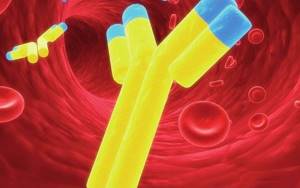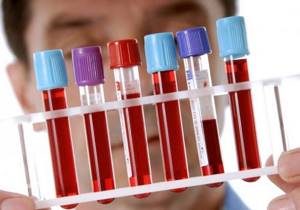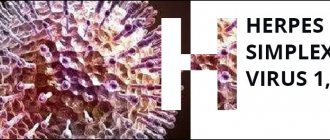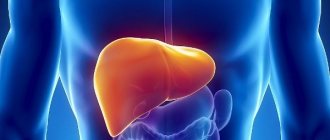Preparation for PCR diagnosis of hepatitis
The procedure is carried out in the morning on an empty stomach, blood is taken from a vein.
The patient must follow the following rules:
- Do not eat food 10 hours before the procedure. You are allowed to drink only clean water.
- Do not smoke 4 hours before the procedure and do not drink alcohol the day before the test.
- Avoid physical and psychological stress before the procedure.
- Do not take medications for 2 days before blood collection. If the patient took medication for any reason, the laboratory technician must be notified about this (the use of certain drugs causes a false positive result).
Antibodies to hepatitis C virus (total)
Antibodies to the hepatitis C virus are normally absent in the serum. Total antibodies to the hepatitis C virus are antibodies of the IgM and IgG classes directed to the complex of structural and non-structural proteins of the hepatitis C virus. This study is a screening test to identify patients with VSH.
Total antibodies to the hepatitis C virus can be detected in the first 2 weeks of the disease, and their presence indicates possible infection with the virus or a previous infection. It is impossible to obtain an unambiguous answer based on the results of this test, since the test determines total IgM and IgG antibodies. If this is an early period of acute viral hepatitis C, then this is indicated by IgM antibodies, and if this is a period of convalescence or a condition after suffering from HCV, then this is indicated by IgG antibodies.
IgG antibodies to HCV can persist in the blood of convalescents for 8-10 years with a gradual decrease in their concentration. Late detection of antibodies is possible a year or more after infection. In chronic hepatitis C, total antibodies are constantly determined. Therefore, to clarify the timing of infection, it is necessary to separately determine IgM antibodies to HCV.
Evaluation of the study results
The result of the study is expressed qualitatively - positive or negative. A negative test result indicates the absence of total antibodies (JgM and JgG) to HCV in the blood serum. A positive result - the detection of total antibodies (JgM and JgG) to HCV indicates the initial stage of acute viral hepatitis C, the acute period of infection, the early stage of convalescence, previous viral hepatitis C or chronic viral hepatitis C.
However, the detection of total antibodies to HCV is not sufficient to make a diagnosis of HCV and requires confirmation to exclude a false-positive test result. Therefore, when a positive result of a screening test for total antibodies to HCV is obtained, a confirmatory test is performed in the laboratory. The final result of determining total antibodies to HCV is issued together with the result of the confirmatory test.
Interpretation of PCR test results
Deciphering ELISA and PCR analysis is a task for a hepatologist or infectious disease specialist. The results of a biopsy, biochemical blood test and ultrasound are also required. Only a qualified doctor can decipher the results of a PCR analysis and prescribe therapy based on them. Tables for deciphering the viral load for hepatitis C are given below.
Qualitative analysis. Decoding
| Discovered | The patient is infected because Virus RNA was found in his biological material. |
| Not detected | The patient is not infected, or the amount of viral RNA is below the sensitivity limit. |
Quantitative analysis. Decoding
| Not detected | The man is healthy. Virus RNA was not found in the biomaterial, or its concentration is below the sensitivity limit. |
| Up to 1.8*10^2 IU/ml | The virus RNA concentration is below the quantitation range. In this case, caution is required when interpreting the result. Repeated testing is often necessary. |
| Up to 8*10^5 IU/ml | Low level of viral load in hepatitis C. As a rule, a decrease in the concentration of the virus indicates successful treatment. |
| More than 8*10^5 IU/ml | High level of viral load in hepatitis C. |
| More than 2.4*10^7 IU/ml | Since the amount of viral RNA is outside the upper limit of the quantitation range, the level of viral load cannot be determined. A repeat test with a diluted blood sample is needed. |
Genotyping. Decoding
| RNA of a specific genotype detected | A hepatitis C virus belonging to a specific genotype and subtype was found in the patient's biomaterial. The result is indicated by numbers and Latin letters: 1a, 2b, etc. There are 7 genotypes and 67 subtypes. In Russia, out of 7 genotypes, the first 3 are found. |
| Hepatitis C virus RNA detected | RNA of a virus genotype atypical for Russia was found in the patient’s biomaterial, so additional research is required. |
| Not detected | The person is healthy or has a very low concentration of virus RNA in his blood. |
Sometimes a PCR test is negative, but an ELISA test indicates the presence of antibodies to the virus. This means that a person who had acute hepatitis C was able to recover on his own. About 20 cases of infection with strong resistance of the body to infection end in spontaneous recovery.

In some situations, the results of high-precision PCR analysis may be distorted:
- Violations of temperature and other conditions for transporting blood to the laboratory.
- Blood sample contamination.
- Presence of traces of heparin and other anticoagulants in the blood.
- The presence of inhibitors in the biomaterial (the polymerase chain reaction slows down or stops).
Indications for the study
When to get tested:
- if the enzyme immunoassay gave a positive result;
- the patient experiences symptoms of cirrhosis or liver damage: it changes in size, the spleen becomes larger, dilated veins are visible in the abdomen, the skin turns yellow, pain is observed in the right side of the abdomen;
- ALT and AST activity in blood tests is increased;
- before starting treatment, in order to determine the amount of virus in the blood of the infected person;
- to monitor how effective the therapy was. After treatment - to monitor your health condition and avoid relapse;
- if hepatitis B is diagnosed, to exclude mixed liver damage;
- after sexual intercourse with a person infected with hepatitis.
Advantages of PCR analysis
Firstly, it is an early diagnostic method that allows one to identify the genetic material of the virus. ELISA analysis can only detect substances produced by the body in response to infection (immunoglobulins). Several weeks or even months may pass from the moment of infection with hepatitis C until the onset of an immune response, and during this period the ELISA test is ineffective. PCR analysis provides an answer already in the first week of infection.
The second advantage of PCR analysis is the low probability of error. During the study, a section of genetic material characteristic of only one type of pathogen is determined, which makes it possible to exclude a false result. ELISA analysis shows the presence of antibodies that are secreted against different viruses (cross antibodies).

Antibodies to hepatitis C virus JgM
Antibodies to the hepatitis C virus JgM are normally absent in the serum. The presence of JgM class antibodies to HCV in the patient’s blood makes it possible to verify active infection. Antibodies of the JgM class can be detected not only in acute HCV, but also in chronic hepatitis C.
Antibodies of the JgM class to HCV appear in the patient’s blood 2 weeks after the development of the clinical picture of acute viral hepatitis C or exacerbation of chronic hepatitis and usually disappear after 4-6 months. A decrease in their level may indicate the effectiveness of drug therapy.
Disadvantages of PCR
No matter how effective the study is, it has its disadvantages:
- During a PRC study, the genetic material of pathogens (including non-living ones) is replicated, and this leads to distorted results. To evaluate the effectiveness of treatment using PCR analysis, a repeat study is carried out at least 2 months after the previous one. The patient's body must be “cleansed” of dead viruses.
- Test systems detect part of the viral genome, which theoretically could belong to other viruses or microorganisms, therefore, there is a possibility of a false positive result.
- The rapid mutation of viruses sometimes outpaces the ability of test systems to determine the genome of the pathogen, therefore, there is a possibility of a false negative response.
Manufacturers of laboratory test systems regularly test them, finding out how the systems react to cross-reactions or any genotype of the virus.
How is the procedure performed?

The procedure is carried out by collecting blood in a laboratory. Preparing for the analysis is not difficult. Blood should be collected on an empty stomach in the morning. All sterile conditions must be observed, as there are cases when the virus is introduced due to poor sanitary conditions or when gloves are reused.
Next, the samples are sent for testing. After 1-2 days, the analysis will be ready. In some cases, an additional blood sample is taken a few days later to accurately confirm the presence or absence of RNA.
Molecular virological techniques play a key role in the diagnosis and monitoring of HCV treatment. Because growing a virus in a cell is difficult, molecular techniques helped identify the virus, making it one of the first pathogens identified by purely molecular methods.
The NAT (International Standard Assay) method is considered the gold standard for detecting active HCV replication. It is extremely effective in establishing the diagnosis of acute infection because RNA is detectable as early as 1 week after possible infection, and at least 4-6 weeks before seroconversion. Diagnosis of infection is made through antibody screening, followed by NAT for HCV RNA for confirmation, as well as monitoring patients during treatment. Assessing viral load at baseline is also critical to determining viral response during therapy.
Price of PCR analysis for hepatitis C
In government agencies, you can get tested for free; you only need a referral from a hepatologist or infectious disease specialist.
Paid research is available in all major cities of the Russian Federation. The price is affected by the type of study, the equipment used, and the time required for analysis.
In Moscow and St. Petersburg, a high-quality PCR test for hepatitis C costs from 600 to 900 rubles, in the region - from 300 to 800 rubles.
Quantitative PCR analysis for hepatitis C costs from 17,000 to 22,000 rubles, for hepatitis B - from 1,200 to 10,000 rubles.
To obtain reliable results of a PCR test for hepatitis C, you need to contact only reputable laboratories. In this case, the issue of research cost fades into the background.
What should the patient do after receiving the test results?

After receiving the results of the blood sample test, the patient should go to the attending physician. Drawing conclusions about your diagnosis and planning a specific treatment on your own is not recommended at all .
Depending on the test results, the hepatologist prescribes one or another therapeutic regimen using active antiviral drugs. Depending on the analytically determined HCV genotype, the following treatment regimens for this dangerous disease may be prescribed:
- Sofosbuvir in combination with Ledipasvir for genotypes 1, 4, 5 and 6;
- Sofosbuvir and Daclatasvir – at 1, 2, 3 and 4;
- Sofosbuvir in combination with Velpatasvir - for any of the known genotypes of the pathogen.
Depending on the general condition of the body, the concentration of hepatovirus and the characteristics of the lesion, therapy may be prescribed for 12 or 24 weeks, with or without the use of Ribavirin . The patient should purchase medications for the entire therapeutic period, since it should not be interrupted under any circumstances. However, it is not at all necessary to save money on expensive American medicines - you can buy cheaper Indian analogues. These drugs are manufactured according to the official recipe. The lower cost is due to the possibility of mass production of the drug. At the same time, Indian manufacturers are so confident in the high quality of their products that they provide their customers with any guarantees. For example, Zydus Heptiza offers a Recovery Guarantee . This is a document according to which the patient has the right to re-treatment at the expense of the company if the previous therapy did not help.
Important! After purchasing the medicine, the patient must fully follow the recommendations of the attending physician and take the medicine daily during the entire therapeutic period.







